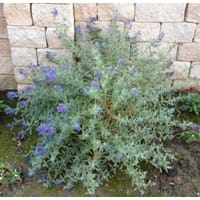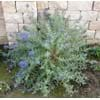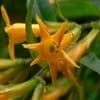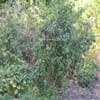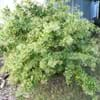Life Span
Perennial
Perennial
Type
Shrub
Flowering Plants, Grass, Shrubs
Origin
China, Japan
Central America, North America
Types
Not Available
Not Available
Habitat
Well Drained
Temperate Regions, tropical environments
USDA Hardiness Zone
6-9
7-10
AHS Heat Zone
9-1
Not Available
Sunset Zone
4, 5, 6, 7, 8, 9, 14, 15, 16, 17, 18, 19, 20, 21, 22, 23, 24
Not Available
Habit
Oval or Rounded
Upright/Erect
Minimum Width
Not Available
Flower Color
Blue Violet
Pink, Red, White, Yellow
Flower Color Modifier
Not Available
Bicolor
Fruit Color
Non Fruiting Plant
Black, Green
Leaf Color in Spring
Gray Green
Green, Dark Green
Leaf Color in Summer
Gray Green
Dark Green
Leaf Color in Fall
Gray Green
Yellow green
Leaf Color in Winter
Not Available
Dark Green
Leaf Shape
Rhomboid
Egg-shaped
Plant Season
Summer, Fall
Fall, Late Summer, Mid Summer
Sunlight
Full Sun
Full Sun
Type of Soil
Loam, Sand
Loam, Sand
The pH of Soil
Acidic, Neutral
Neutral, Slightly Acidic, Slightly Alkaline
Soil Drainage
Well drained
Well drained
Bloom Time
Late Summer, Early Fall
Early Fall, Late Summer, Mid Summer
Tolerances
Drought
Drought
Where to Plant?
Ground, Pot
Container, Ground, Pot
How to Plant?
Cuttings, Rooted stem cutting
Seedlings
Plant Maintenance
Medium
Low
Watering Requirements
Needs less watering, Water Deeply
Do not water excessively
In Summer
Lots of watering
Lots of watering
In Spring
Moderate
Moderate
In Winter
Average Water
Average Water
Soil pH
Acidic, Neutral
Neutral, Slightly Acidic, Slightly Alkaline
Soil Type
Loam, Sand
Loam, Sand
Soil Drainage Capacity
Well drained
Well drained
Sun Exposure
Full Sun
Full Sun
Pruning
Remove damaged leaves, Remove dead branches, Remove dead flowers, Remove dead leaves, Remove dead or diseased plant parts, Remove deadheads
Cut back old stems to the ground
Fertilizers
All-Purpose Liquid Fertilizer, Apply N-P-K
as it is a flowering plant, use high phosphorous content fertilizer
Pests and Diseases
bees, Red blotch, Whiteflies
Aphids, Slugs
Plant Tolerance
Drought, Drought and Wet Site, Variety of soil types
Drought
Flower Petal Number
Single
Single
Foliage Texture
Medium
Coarse
Foliage Sheen
Matte
Matte
Attracts
Butterflies
Bees, Butterflies
Allergy
Not Available
Not Available
Aesthetic Uses
Beautification, Ornamental use, Showy Purposes
Showy Purposes, small hedge
Beauty Benefits
Not Available
Making cosmetics
Environmental Uses
Air purification
Not Available
Medicinal Uses
Not Available
anti-inflammatory, Aphrodisiac, Diuretic, Purgative, Vulnerary
Part of Plant Used
Not Available
Flowers, Leaves
Other Uses
Used as Ornamental plant
Edible dye
Used As Indoor Plant
No
No
Used As Outdoor Plant
Yes
Yes
Garden Design
Foundation, Mixed Border
Container, Edging, Feature Plant, Foundation, Wildflower
Botanical Name
CARYOPTERIS incana
Mirabilis jalapa
Common Name
bluebeard
you shu
marvel of peru, four o'clock flower
In Hindi
Bluebeard
Mirabilis jalapa
In German
Blaubart
Wunderblume
In French
Bluebeard
Belle-de-nuit
In Spanish
Barba Azul
Dondiego de noche
In Greek
Κυανοπώγωνα
mirabilis Jalapa
In Portuguese
Barba Azul
Maravilha
In Polish
Sinobrody
mirabilis Jalapa
In Latin
Bluebeard
mirabilis Ja-
Phylum
Streptophyta
Magnoliophyta
Class
Not Available
Magnoliopsida
Order
Lamiales
Caryophyllales
Family
Verbenaceae
Nyctaginaceae
Genus
Caryopteris
Mirabilis
Clade
Angiosperms, Asterids, Eudicots
Angiosperms, Core eudicots, Eudicots
Tribe
Not Available
Not Available
Subfamily
Not Available
Not Available
Number of Species
Not Available
Properties of Bluebeard and Mirabilis Jalapa
Wondering what are the properties of Bluebeard and Mirabilis Jalapa? We provide you with everything About Bluebeard and Mirabilis Jalapa. Bluebeard doesn't have thorns and Mirabilis Jalapa doesn't have thorns. Also Bluebeard does not have fragrant flowers. Bluebeard has allergic reactions like Not Available and Mirabilis Jalapa has allergic reactions like Not Available. Compare all the properties and characteristics of these two plants. Find out which of these plant can be used as indoor plant. If you are interested to decorate your house and garden, find out aesthetic uses, compare them and select the plant which will beautify your surrounding. Along with beautification, try comparing medicinal and edible uses of Bluebeard and Mirabilis Jalapa and you can choose the plant having best and most benefits.
Season and Care of Bluebeard and Mirabilis Jalapa
Season and care of Bluebeard and Mirabilis Jalapa is important to know. While considering everything about Bluebeard and Mirabilis Jalapa Care, growing season is an essential factor. Bluebeard season is Summer and Fall and Mirabilis Jalapa season is Summer and Fall. The type of soil for Bluebeard is Loam, Sand and for Mirabilis Jalapa is Loam, Sand while the PH of soil for Bluebeard is Acidic, Neutral and for Mirabilis Jalapa is Neutral, Slightly Acidic, Slightly Alkaline.
Bluebeard and Mirabilis Jalapa Physical Information
Bluebeard and Mirabilis Jalapa physical information is very important for comparison. Bluebeard height is 90.00 cm and width Not Available whereas Mirabilis Jalapa height is 60.00 cm and width 50.00 cm. The color specification of Bluebeard and Mirabilis Jalapa are as follows:
Bluebeard flower color: Blue Violet
Bluebeard leaf color: Gray Green
Mirabilis Jalapa flower color: Pink, Red, White and Yellow
- Mirabilis Jalapa leaf color: Green, Dark Green
Care of Bluebeard and Mirabilis Jalapa
Care of Bluebeard and Mirabilis Jalapa include pruning, fertilizers, watering etc. Bluebeard pruning is done Remove damaged leaves, Remove dead branches, Remove dead flowers, Remove dead leaves, Remove dead or diseased plant parts and Remove deadheads and Mirabilis Jalapa pruning is done Cut back old stems to the ground. In summer Bluebeard needs Lots of watering and in winter, it needs Average Water. Whereas, in summer Mirabilis Jalapa needs Lots of watering and in winter, it needs Average Water.
